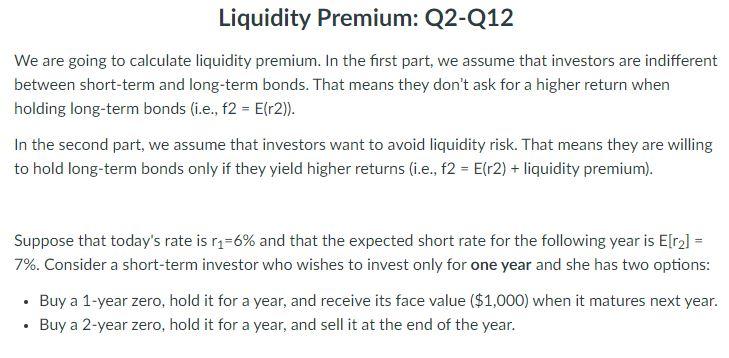Answered step by step
Verified Expert Solution
Question
1 Approved Answer
Liquidity Premium: Q2-Q12 We are going to calculate liquidity premium. In the first part, we assume that investors are indifferent between short-term and long-term bonds.


Step by Step Solution
There are 3 Steps involved in it
Step: 1

Get Instant Access to Expert-Tailored Solutions
See step-by-step solutions with expert insights and AI powered tools for academic success
Step: 2

Step: 3

Ace Your Homework with AI
Get the answers you need in no time with our AI-driven, step-by-step assistance
Get Started


